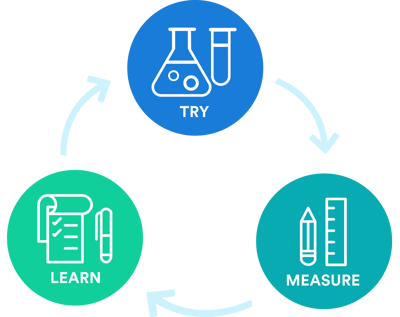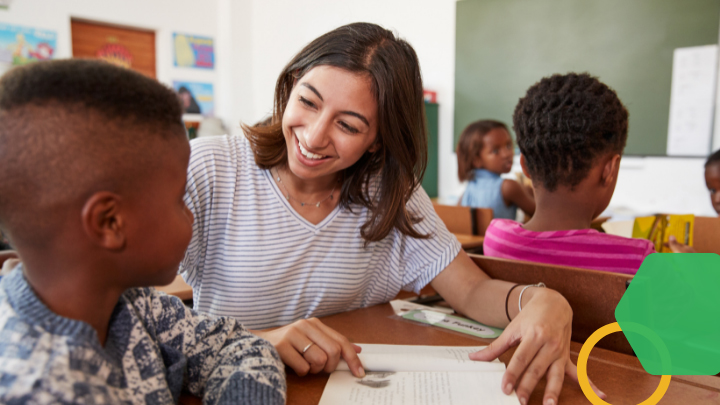When I reflect on my years in the classroom, the memories tend to skew to the high points, to the positive peak moments that brought fulfillment and a connection to purpose. But, if we’re being honest, there was a period during my second year of teaching when I really struggled and wasn’t sure about what to do.
My first year of teaching was atypical. Teaching in a turnaround setting on Chicago’s south side, my 4th graders rocked state tests and showed record growth. As a reward, I was moved to the higher stakes 6th grade setting, where test scores would determine if a student was promoted or retained. That’s when things changed. I simply wasn’t ready for any of it.
To say that I struggled with classroom management is probably an understatement. The curriculum was so different, and teaching all subjects to the same students all day at that grade level was really tough. Many of my students were managing through unique trauma, had been retained at least once, and I was totally unprepared to support them. At times my class felt out of control, and I, a once confident and cheerful teacher, found myself frustrated and at a bit of a loss. And I knew my students felt frustrated too.
But I was one of the lucky ones. The two-year alternative certification program I was a part of provided me with a dedicated coach. She not only visited my classroom twice a month for supportive, non-evaluative observations, she also took video. She would then send me notes along with a video of the lesson so I would have context to understand her feedback. I have to admit, watching yourself teach is rough stuff. However, through the high points and cringeworthy moments alike, I learned a lot, and ultimately the situation improved. My students passed their state exams, and we even found consistent joy on a daily basis by the time the Chicago river thawed for the spring.
In a typical cycle my coach would visit early in the week and then send observation notes and a video I could watch of my lesson to place that feedback within 48 hours. Like most teachers I was without a consistent planning period, so it would take me anywhere from an additional 3-5 days to dissect her feedback, painstakingly watch the video, and integrate the feedback.
Don’t get me wrong, video-supported coaching under the supervision of a master coach made a huge difference for me, but there were definitely some challenges:
- The feedback loop was as fast as my coach could make it, but you’ve got to dedicate a lot of time to watch the video and dissect it. Sometimes this lag meant that the feedback was no longer actionable.
- The presence of my coach during the recording and the obvious presence of a recording device probably created some level of observer bias in both my actions and the actions of my students.
Looking back on that year where I struggled, I’m still so grateful for my coach, and for the hours of video footage, plus the hours we spent unpacking it—I learned so much, I improved. I felt more supported, and as a result, my students did too. In hindsight, I recognize that I was uniquely fortunate to have a coach, not to mention the spare time to slog through that footage. This intervention made a huge difference, but most teachers don’t have access to this type of support, nor the time to watch the real-time playback of an hour lesson every week.
Why am I sharing this now? As BetterLesson’s Chief Product Officer, I have the privilege of leading a team of Engineers, Learning Designers, and Product Managers who work together to develop increasingly more effective and enjoyable professional learning experiences for K-12 teachers everywhere.
Some questions I think about often in this work:
- Awareness—How can we help teachers become more self-aware of their practice so they can continuously improve and support all students to achieve?
- Impact—How can we help teachers with the tools and tips that enable micro-shifts in their practice to improve learning outcomes for all learners?
- Scale—How can we create actionable learning experiences for every teacher, every day in a way that is easy to implement consistently?
Today I am so excited to share that we’re teaming up with TeachFX to answer those questions. TeachFX is an app that analyzes patterns in student and teacher talk time. This data can reveal so much about the rigor, engagement, and equity within a classroom. Unlike video analysis like I used with my coach, reports from TeachFX take seconds to load, meaning teachers and coaches can analyze actions during passing periods and make meaningful shifts within minutes, not days.
We recognize that data alone isn’t enough, but when combined with the right tips, tricks, and tools, it’s a powerful accelerant to scaling meaningful shifts in educator practice in every classroom. At BetterLesson our philosophy has always been simple: TML – try, measure, learn.

Together with TeachFX, we’re excited to put more “oomph” behind the Measure in our Try-Measure-Learn philosophy and support great teaching and incremental improvement that leads to big results. By combining our proven system of research-based, actionable strategies with TeachFX’s analytics, we’re confident that we can help every teacher, every step of the way.
Whether you’re a struggling second year teacher like I was or a seasoned veteran navigating to the next level, we’re excited to help you make those shifts together.
To learn more about how BetterLesson and TeachFX can help your teachers improve student engagement and measure the impact of incremental shifts in the classroom, contact BetterLesson today.








